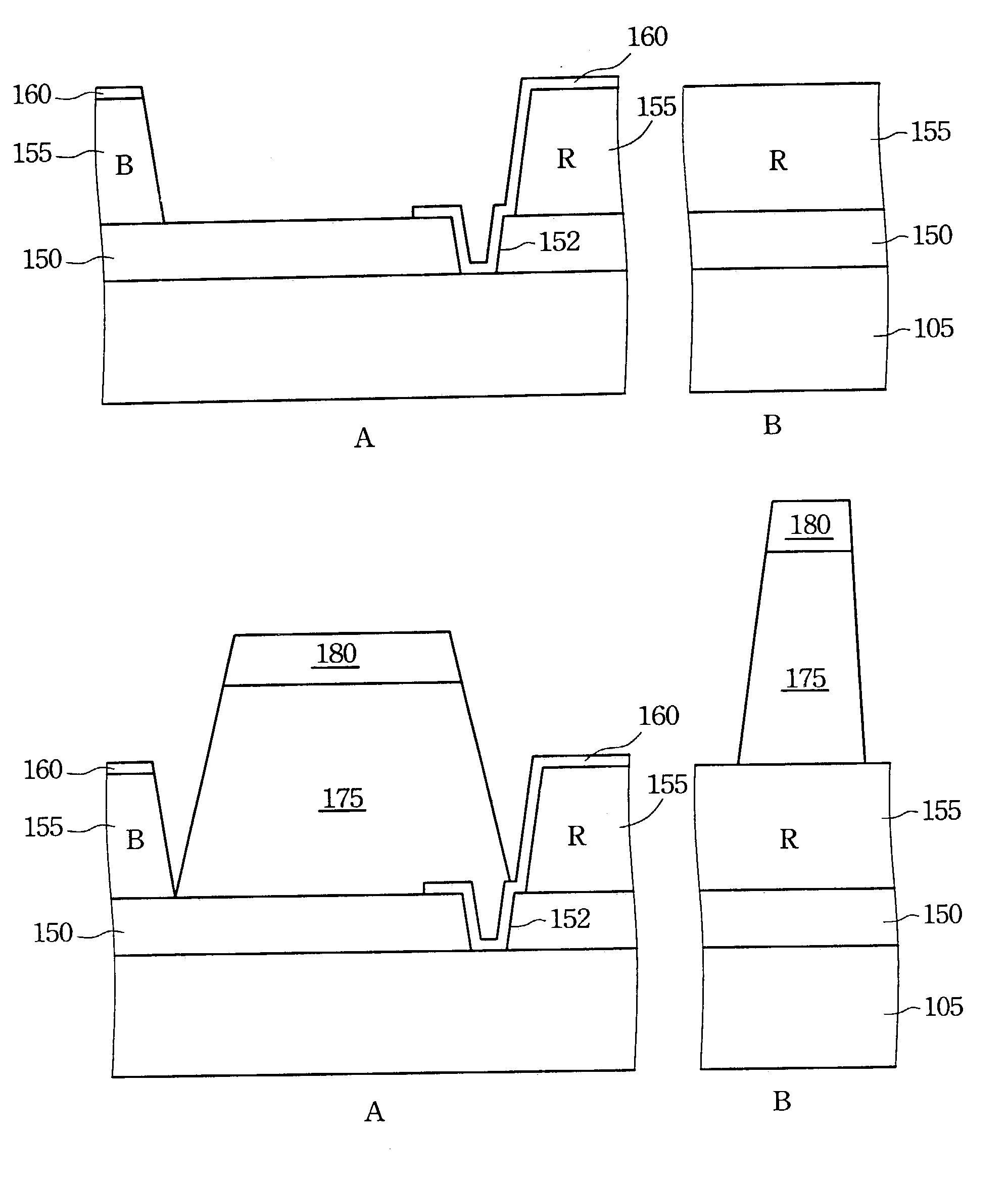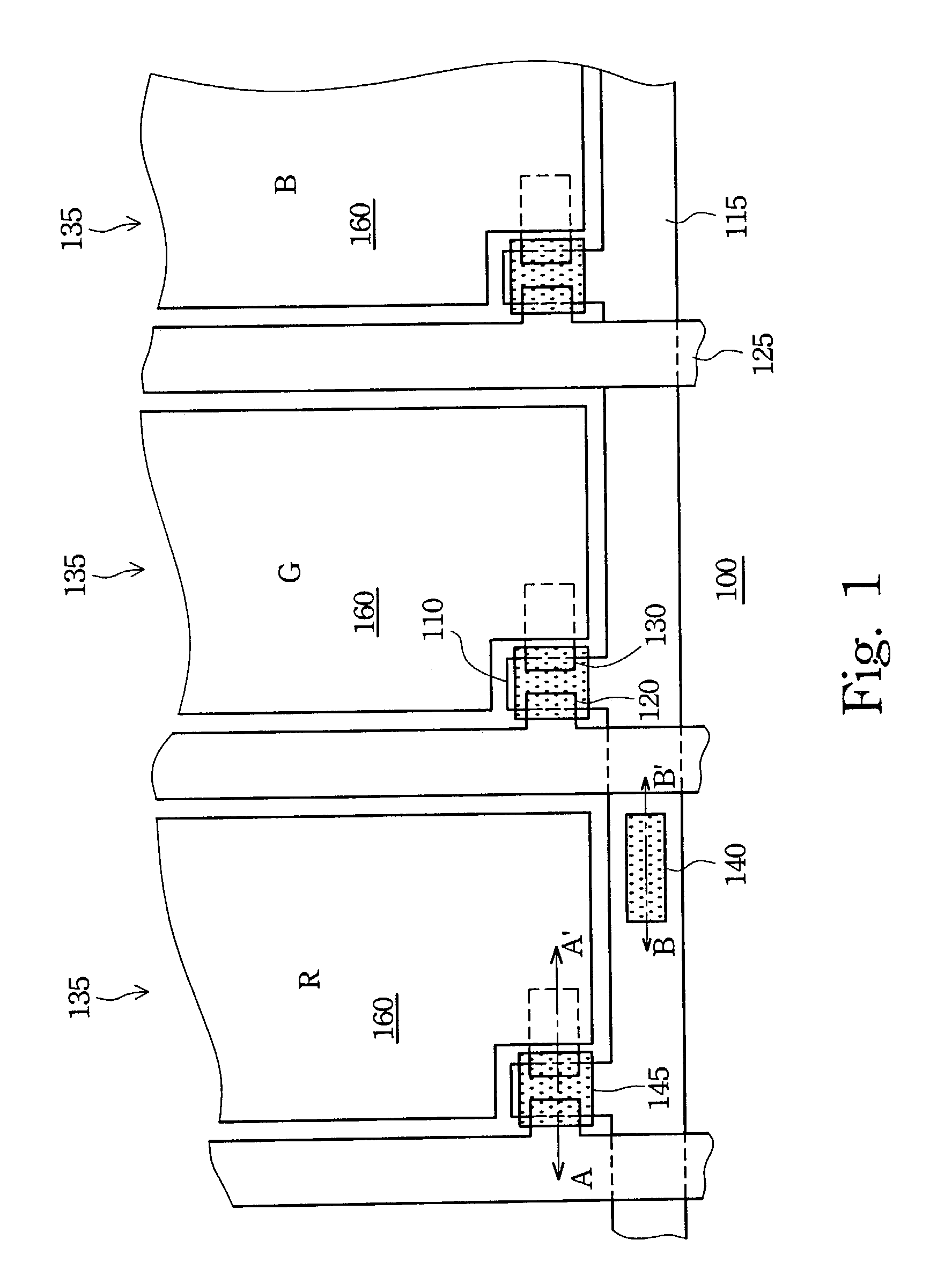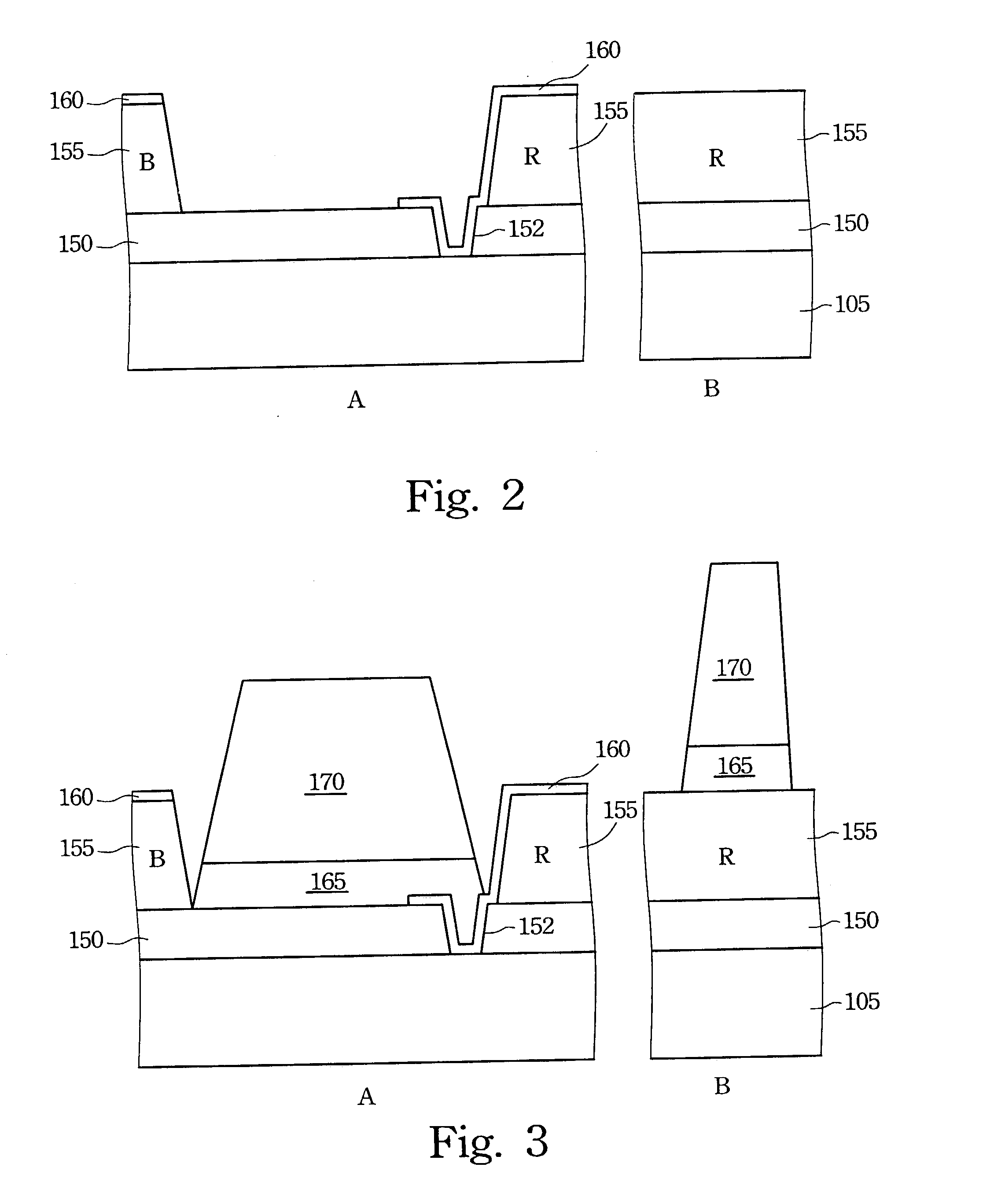Method of utilizing dual-layer photoresist to form black matrixes and spacers on a control circuit substrate
a control circuit substrate and photoresist technology, applied in non-linear optics, instruments, optics, etc., can solve the problems of ineffective increase of inability to effectively increase the aperture ratio of the tft-lcd, and inability to achieve long exposure time, etc., to achieve the effect of increasing the process margin and increasing the throughput of products
- Summary
- Abstract
- Description
- Claims
- Application Information
AI Technical Summary
Benefits of technology
Problems solved by technology
Method used
Image
Examples
embodiment 1
[0031]FIGS. 2 and 3 are cross-sectional diagrams of utilizing dual-layer photoresist to form black matrixes and spacers on a control circuit substrate in FIG. 1 according to a preferred embodiment of this invention. The labels A and B in FIGS. 2 and 3 indicate the cross-sectional views of the cross-sectional lines AA′ and BB′, respectively. The TFT structures are not drawn in the Parts A in FIGS. 2 and 3 to simplify the pictures.
[0032]In FIG. 2, a passivation layer 150 such as a silicon nitride layer is formed by, for example, chemical vapor deposition (CVD) on the control circuit substrate 105 (i.e. the transparent substrate 100 having the control circuit thereon as shown in FIG. 1). The control circuit substrate 105 comprises, for example, a TFT array substrate. Next, the passivation layer 180 is patterned by, for example, photolithography and etching to form contact windows 152 therein to expose drains 130 (not shown in FIG. 2) of the TFT, respectively.
[0033]A color filter layer ...
embodiment 2
[0042]FIGS. 2 and 4 are cross-sectional diagrams of utilizing dual-layer photoresist to form black matrixes and spacers on a control circuit substrate in FIG. 1 according to another preferred embodiment of this invention. The labels A and B in FIGS. 2 and 4 indicate the cross-sectional views of the cross-sectional lines AA′ and BB′, respectively. The TFT structures are not drawn on the Parts A in FIGS. 2 and 4 to simplify the pictures. Besides, a detailed description of FIG. 2 has been given above, and hence is omitted here.
[0043]In FIG. 4, a transparent photoresist is formed on the control circuit 105 having the color filter layer 155 and the pixel electrodes 160 located thereon. Then, the transparent photoresist is soft-baked. A black resin is formed on the black resin and then is soft-baked. Next, the black resin and the transparent photoresist are patterned and hard-baked to form transparent photoresist layers 175 and black resin layers 180. Consequently, black matrixes is forme...
PUM
| Property | Measurement | Unit |
|---|---|---|
| optical density | aaaaa | aaaaa |
| thickness | aaaaa | aaaaa |
| thickness | aaaaa | aaaaa |
Abstract
Description
Claims
Application Information
 Login to View More
Login to View More - R&D
- Intellectual Property
- Life Sciences
- Materials
- Tech Scout
- Unparalleled Data Quality
- Higher Quality Content
- 60% Fewer Hallucinations
Browse by: Latest US Patents, China's latest patents, Technical Efficacy Thesaurus, Application Domain, Technology Topic, Popular Technical Reports.
© 2025 PatSnap. All rights reserved.Legal|Privacy policy|Modern Slavery Act Transparency Statement|Sitemap|About US| Contact US: help@patsnap.com



